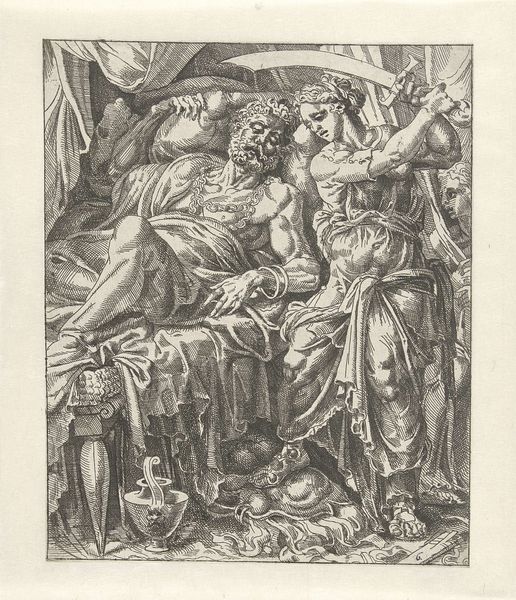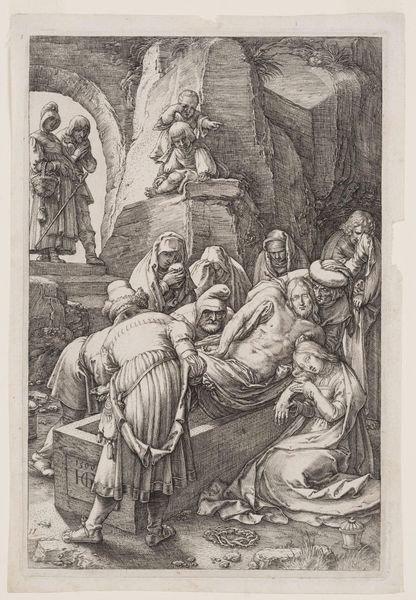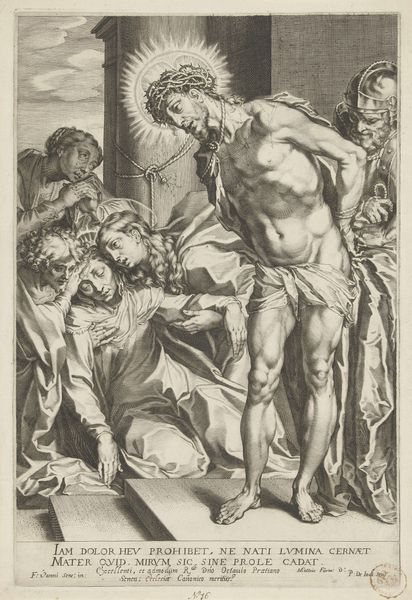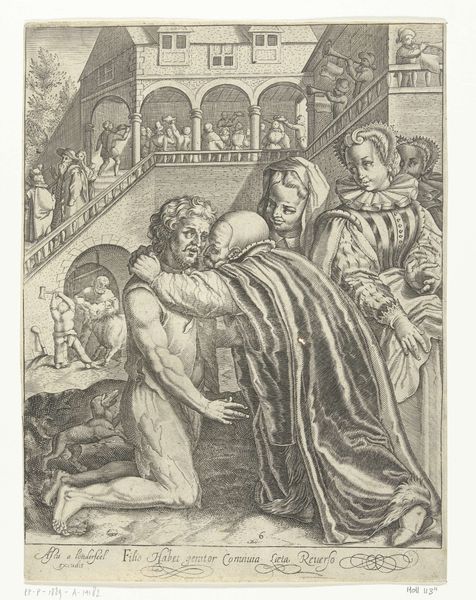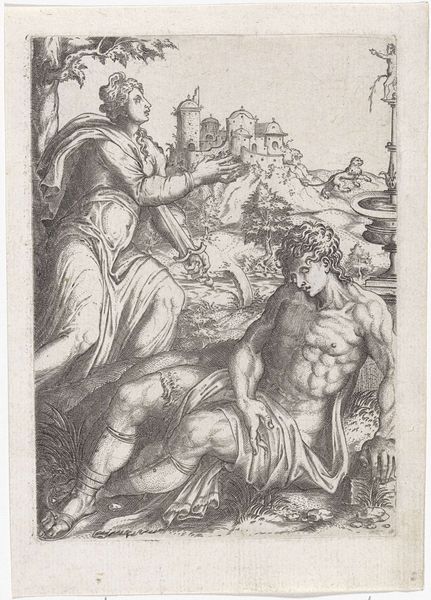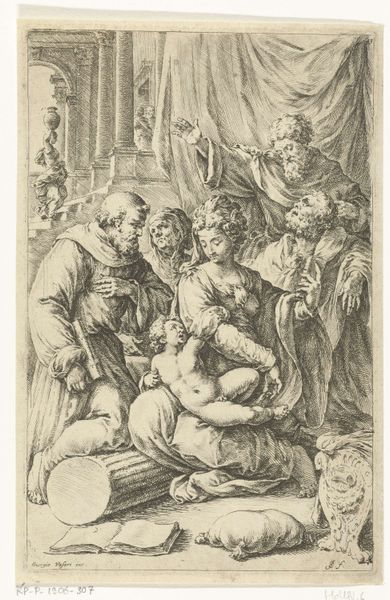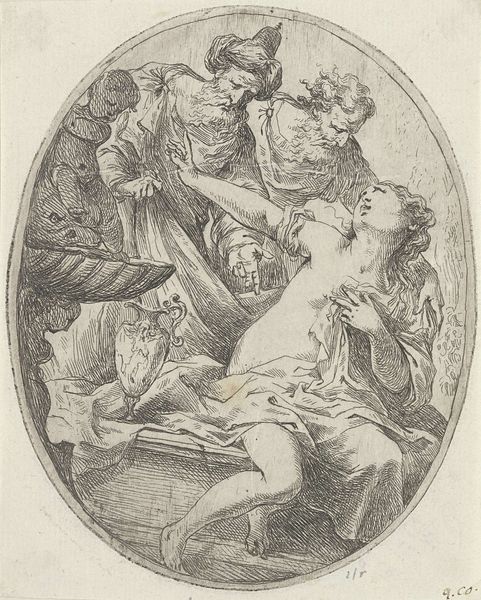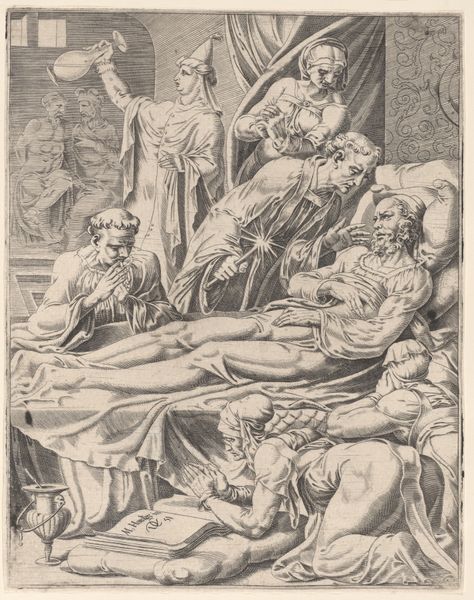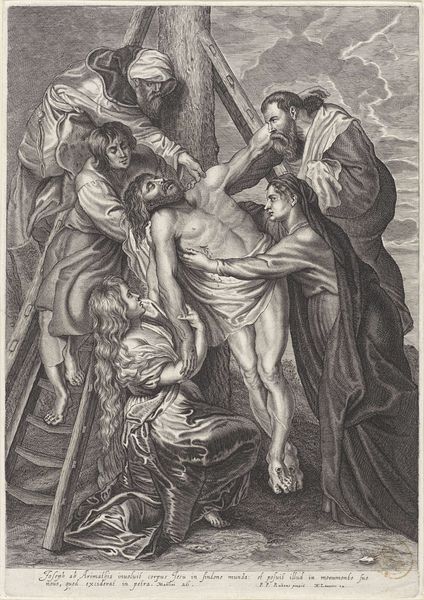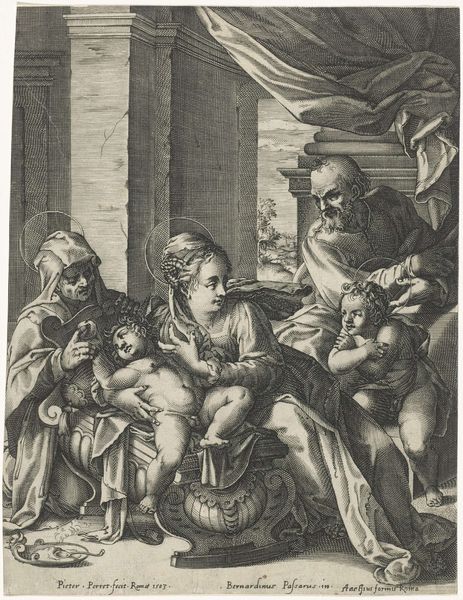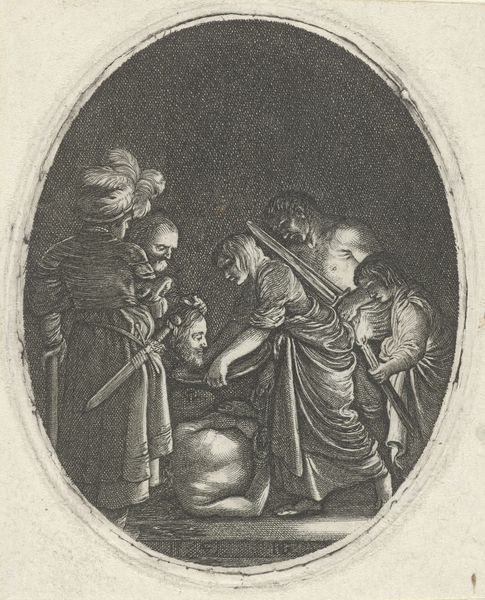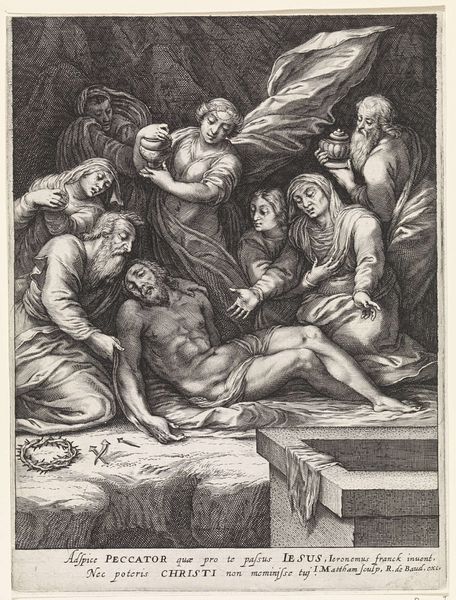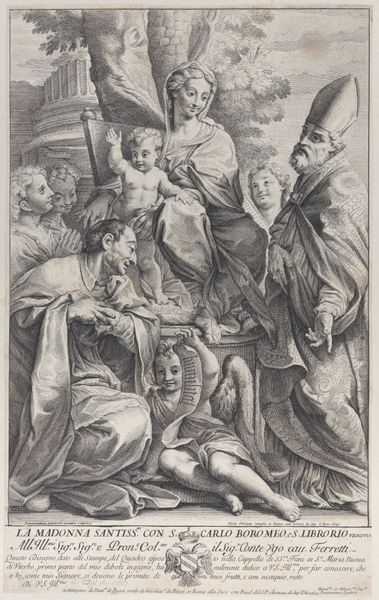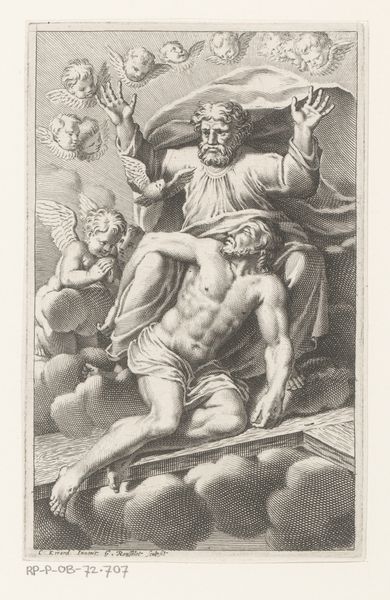
Dimensions: height 156 mm, width 88 mm
Copyright: Rijks Museum: Open Domain
Curator: Here we have an engraving titled "Drie heiligen Tomas, Matteüs en Filippus," which translates to "Three Saints Thomas, Matthew, and Philip," dating from the period of 1534 to 1640. It’s currently held here at the Rijksmuseum. Editor: The high contrast really strikes me. It feels dramatic, even theatrical, and that central figure, elevated above the others... he’s dominating the scene. Curator: That sense of drama certainly aligns with the Baroque aesthetic, marked as it is by grandeur. Given the historical context, religious prints like this played a significant role. Engravings were essential for disseminating images and ideas across Europe at this time. Editor: And considering the Reformation and Counter-Reformation, visuals carried enormous weight in shaping religious and political allegiances. Who controlled the image controlled the narrative. The three figures, though saints, are almost weaponized with their respective standards and weapons. It's fascinating to see how religion and power are intertwined visually. Curator: The positioning is fascinating, the muscular Matthew literally elevated by the cloud mass, towering over the other two, spear in hand. We could argue there’s a conscious construction of authority through the use of dynamic poses and strong diagonals in the Baroque style. It served the broader cultural purpose of reinforcing the established order, imbuing it with a divine blessing, if you will. Editor: That order being decidedly patriarchal and even militaristic. The print serves not only as a representation of these saints, but also as an active participant in the power structures of the period. The print is so telling about the social hierarchies of the time and reinforces existing orthodoxies. I mean, that much hyper-masculine aggression would scare me even in broad daylight. Curator: The artistry allows these ideas to permeate society more organically. This work acts as more than decoration, but it shapes the viewer's cultural understanding. Editor: Absolutely. Visual media had, and continues to have, real world effects on belief and policy. Food for thought, certainly. Curator: Indeed. Art prompts us to interrogate not just what we see, but why we see it, and who benefits from that vision.
Comments
No comments
Be the first to comment and join the conversation on the ultimate creative platform.
